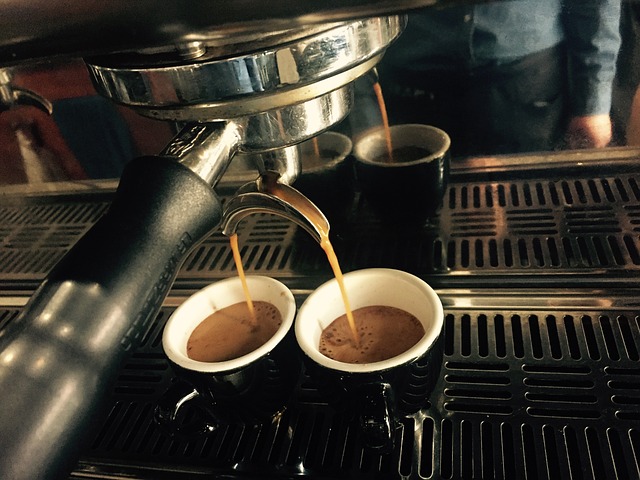How Coffee Machines Work and How to Use Them
Coffee machines are interesting devices that turn water and coffee grounds into a tasty drink. In this article, you will learn how different types of coffee machines work, the parts that make them run, and tips for getting the best flavor every time.

What Makes Different Types of Coffee Machines Unique
Coffee machines come in several distinct categories, each designed to produce specific types of coffee beverages. Drip coffee makers use gravity to pull hot water through ground coffee beans, creating the classic filtered coffee many Americans enjoy daily. Espresso machines force pressurized hot water through finely ground coffee to create concentrated shots, while single-serve pod machines combine convenience with consistency by using pre-measured coffee portions.
French press machines operate through immersion brewing, where coffee grounds steep in hot water before being separated by a metal mesh filter. Cold brew makers use time instead of heat, allowing coffee grounds to extract slowly in room temperature or cold water over 12-24 hours. Each type serves different preferences for strength, flavor profile, and preparation time.
How Coffee Machines Work Mechanically
Most electric coffee machines share common components that work together to create the brewing process. A heating element warms water to optimal brewing temperatures between 195-205°F, while a pump or gravity system moves this heated water through the coffee grounds. The extraction process dissolves soluble compounds from the coffee, including oils, acids, and caffeine.
Drip machines use a showerhead mechanism to distribute hot water evenly across coffee grounds, allowing gravity to pull the brewed coffee through a paper or permanent filter. Espresso machines create pressure between 8-10 bars to force water through tightly packed coffee grounds in approximately 25-30 seconds. Pod machines puncture sealed capsules and push hot water through pre-ground coffee at controlled pressure levels.
Best Coffee Brewing Methods for Different Preferences
The optimal brewing method depends on your taste preferences, time constraints, and desired coffee strength. Pour-over methods like Chemex or V60 offer precise control over water temperature, pouring speed, and extraction time, resulting in clean, bright flavors that highlight coffee’s natural characteristics.
Immersion methods such as French press or AeroPress create fuller-bodied coffee with more oils and sediment, producing rich, robust flavors. Espresso-based methods concentrate coffee compounds into small servings, perfect for milk-based drinks like lattes and cappuccinos. Cold brew methods reduce acidity while creating smooth, mellow coffee that works well served over ice or mixed with milk.
Essential Coffee Machine Tips for Better Results
Proper coffee machine maintenance directly impacts brew quality and equipment longevity. Use filtered water when possible, as mineral content affects both taste and machine performance. Clean your machine regularly according to manufacturer instructions, typically involving monthly descaling to remove mineral buildup from internal components.
Grind coffee beans just before brewing for maximum freshness, and match grind size to your brewing method - coarse for French press, medium for drip machines, and fine for espresso. Store coffee beans in airtight containers away from light, heat, and moisture to preserve flavor compounds. Replace water filters as recommended and clean removable parts like carafes and filter baskets after each use.
Coffee Maker Guide for Choosing the Right Machine
Selecting an appropriate coffee machine requires considering your household size, budget, counter space, and coffee consumption habits. Single-serve machines work well for individuals or families with varied taste preferences, while drip makers suit households that consume multiple cups of similar coffee daily.
Espresso machines require more skill and maintenance but offer versatility for creating café-style beverages at home. Manual brewing methods like French press or pour-over devices cost less initially but require more hands-on involvement. Consider programmable features, automatic shut-off, and thermal carafes if convenience and energy efficiency matter to your daily routine.
| Machine Type | Price Range | Key Features | Best For |
|---|---|---|---|
| Drip Coffee Maker | $25-$200 | Programmable, large capacity | Multiple daily cups |
| Single-Serve Pod | $80-$300 | Quick brewing, variety | Individual servings |
| Espresso Machine | $100-$2000 | Milk frothing, pressure brewing | Café-style drinks |
| French Press | $15-$100 | Simple operation, full-bodied coffee | Manual brewing enthusiasts |
| Cold Brew Maker | $20-$150 | Slow extraction, concentrate production | Cold coffee preferences |
Prices, rates, or cost estimates mentioned in this article are based on the latest available information but may change over time. Independent research is advised before making financial decisions.
Whether you prefer the convenience of automatic drip machines or the hands-on control of manual brewing methods, understanding how coffee machines work helps you make informed decisions about equipment purchases and brewing techniques. Regular maintenance, proper technique, and quality ingredients combine to create consistently satisfying coffee experiences that can rival those from professional coffee shops.




